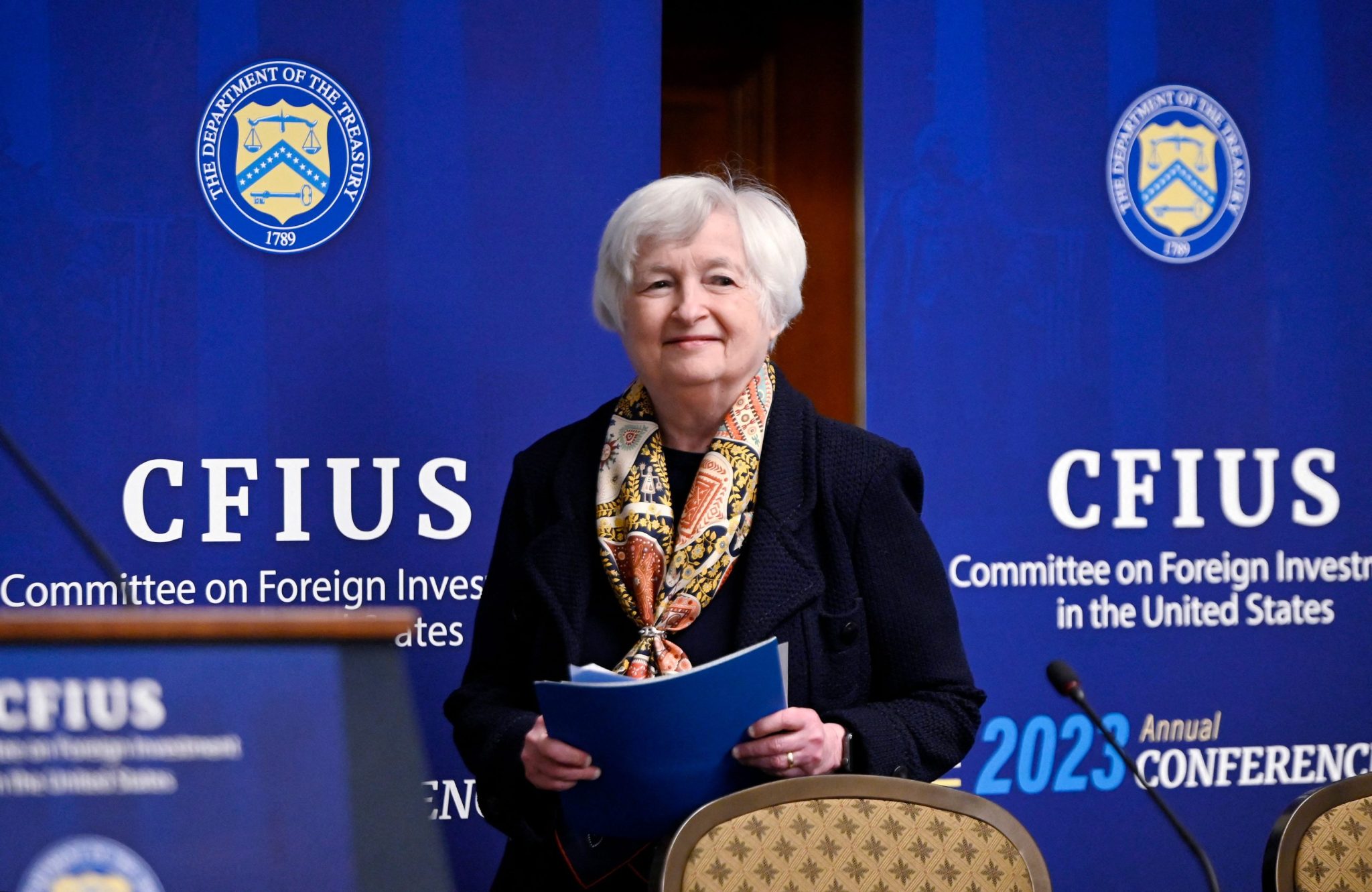
The U.S. national debt is nearing $33 trillion, but Janet Yellen isn’t worried just yet. The Treasury Secretary pointed to a key statistic on Monday that, she believes, illustrates that the federal government’s growing debt burden remains under control.
“The statistic or metric that I look at most often to judge our fiscal course is net interest as a share of GDP,” she told CNBC Monday, referring to the net payments the federal government makes on its debt relative to U.S. gross domestic product. “And even with the rise we have seen in interest rates that remains at a very reasonable level.”
To Yellen’s point, the federal government’s interest payments represented 1.86% of GDP in 2022, according to Federal Reserve data. That’s in line with the historical average since 1960 of just under 2%.
View this interactive chart on Fortune.com
Yellen said she is still “not really concerned about the impact” that recent federal spending programs—including the CHIPS and Science Act that subsidizes semiconductor production and research and the Infrastructure Investment and Jobs Act that authorizes spending on roads, bridges, and other infrastructure projects—will have on the national deficit, arguing the federal government just needs “to make sure that we stay on a sustainable course.”
Still, the Congressional Budget Office warned in a June report that higher interest rates and the mounting national debt could lead the federal government’s net interest payments to spike to 6.7% of GDP by 2053.
“Such high and rising debt would slow economic growth, push up interest payments to foreign holders of U.S. debt, and pose significant risks to the fiscal and economic outlook; it could also cause lawmakers to feel more constrained in their policy choices,” the report’s authors explained.
Some critics have gone a step further in their warnings about the potential impact of an increasingly indebted U.S. government. Mark Spitznagel, founder of the hedge fund Universa Investments, told Fortune in August that we’re living through the “greatest credit bubble in human history.”
“We’ve never seen anything like this level of total debt and leverage in the system. It’s an experiment,” he said. “But we know that credit bubbles have to pop. We don’t know when, but we know they have to.”
Spitznagel pointed out that total public household debt hit a record $17 trillion in the second quarter, with non-housing debt hitting an all-time high $4.7 trillion, and the U.S. debt to GDP ratio was 120%, according to Federal Reserve data.
Yellen did admit on Monday that, moving forward, the federal government will need to “make sure” to keep deficits under control, otherwise the national debt could become an issue.
“Certainly greater deficit reduction is possible,” she added. “The President has proposed a series of measures that would reduce our deficits over time, while investing in the economy and this is something we need to do going forward.”
The United Auto Workers’ strike
The Treasury Secretary was also asked about the United Auto Workers’ (UAW) strike that has affected Detroit’s Big Three—Ford, GM, and Stellantis—and begun to concern economists and investors. She said that she hoped the UAW and the Big Three would come to a “win-win agreement” as soon as possible and refused to discuss any potential impact to the economy at this stage.
“I think it’s premature to be making forecasts about what it means for the economy. It would depend very much on how long the strike lasts and exactly who is affected by it,” she said.
After years of almost unprecedented strength in the labor market during the pandemic when businesses struggled to find talent, Yellen admitted that hiring is cooling on Monday. But overall, despite the threat of workers’ strikes and a rising national debt, she said that she believes the economy remains strong.
“Look, we still have a good, healthy labor market. Consumer spending remains quite robust. We’ve seen strong industrial production. I don’t see any signs that the economy is at risk of a downturn,” she said. “This is the best of all worlds to see continued strength in the economy, a good strong labor market, and inflation moving down, and this is what we’re seeing.”







